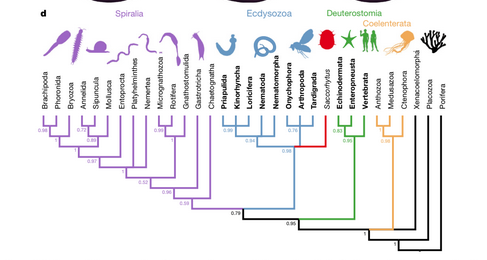They come to the conclusion in the article that it could not possibly be a common ancestor with humans, but I don't know how they could necessarily come to that conclusion. Billions of years are a long, long time.
Not gonna pretend it looks like something that would be a common ancestor with us intuitively, but when you get that far back I don't know...
